Highlights:
* In the first place, we need to understand the definition of “land grabbing”. It is something that can be defined in a number of ways depending on the time and context.
* …no displacement of farmers from small-holder areas is taking place,…..one has to look at the actual process of land acquisition, a process that takes maximum care not to infringe the rights of the local people.
* Any proposals brought by an investor are carefully examined. Each proposal is carefully scrutinized and evaluated to make sure the investor has the financial and technical capability to launch and run the project effectively, efficiently and, most importantly, in an environmentally sound manner.
* [A Ministry of Agriculture official] added that “in Gambella 225.012 hectares is leased by foreign investors with a registered capital of over 46.3 billion birr,” and another 180 domestic investors were also engaged in the same area.
* The Ministry [of Agriculture] conducts monitoring and evaluation of all agricultural investment activities every three months. Experience so far shows no sign of the vices that can appear as a result of “land grabbing”. Indeed, on the contrary what is visible demonstrates all the characteristics of valuable and useful foreign direct investment in the field of agriculture.
* …in Ethiopia most of the land for this investment is being used for food production. Only 2% is taken up by bio-fuel production.
Is one man’s agricultural investment another’s land grabbing?
[From: A Week in the Horn of Africa, Oct. 21, 2011 issue]
The question of land has always been a matter of paramount importance in countries like Ethiopia where the livelihood of the vast majority of the people is based on agriculture. It is hardly surprising that land and the issues associated with it including agriculture and rural development are central to government policy formulation and implementation. Equally, the lack of knowledge of relevant government policies often generate misplaced criticism of what is referred to as “land-grabbing” when large-scale agricultural development is involved, in Ethiopia and other African countries including Mozambique, Tanzania, Madagascar and Ghana. It needs the right perspective for interested parties to get an accurate understanding of the reality of the situation, which varies, of course, from place to place.
In the first place, we need to understand the definition of “land grabbing”. It is something that can be defined in a number of ways depending on the time and context. During colonial times in Africa, it meant the forcible eviction and dislocation of indigenous populations and the allocation of their land to new settlers from the colonizing country. The history of colonial Africa is full of cases where native Africans were ruthlessly dispossessed of their ancestral land and relocated to far-away places, often at gunpoint. In the post-colonial era, “land grabbing” continued through shady deals and other deceitful methods, usually involving the bribery of local chiefs or other government officials. In almost all cases, the “land grabbers” were very specific in their choices. They targeted the best quality land for development of large plantations, for mining activities or for real estate expansion. The only beneficiaries of these dubious transactions were the “land grabbers” themselves and a few corrupt government officials. The inhabitants of the lands themselves were neither consulted nor compensated.
Even the most superficial look at the current situation of agricultural development in Ethiopia shows an entirely different picture. To begin with, as Ethiopia believes the main source of economic growth in the country is agriculture, the main driver of agricultural activity remains small-holder farming. Equally, since there are large expanses of vacant land available in sparsely populated areas of the country there is the opportunity to include large scale farming as a significant part of the government policy of agricultural development. The policy of the government is therefore to promote extensive farming in small-holder areas where there is abundant manpower and intensive industrial farming where there is vacant land suitable for large-scale agricultural development. This allows for the provision of modern farming techniques, the boosting of food production, ensuring market access for exportable agricultural produce, supplying raw material for the local agro-processing industry and the provision of extensive employment opportunities.
As no displacement of farmers from small-holder areas is taking place, any criticism of alleged “land grabbing” in Ethiopia must be directed at the large-scale agricultural developments currently taking place for the most part in the Gambella, Benishangul/Gumuz and SNNP Regional States. Here again, one has to look at the actual process of land acquisition, a process that takes maximum care not to infringe the rights of the local people. The government has set up a “land bank” which identifies and registers vacant and unused lands throughout the country. At the moment the land bank has about 3 million hectares of land registered that can be made available for large-scale agricultural development.
Any proposals brought by an investor are carefully examined. Each proposal is carefully scrutinized and evaluated to make sure the investor has the financial and technical capability to launch and run the project effectively, efficiently and, most importantly, in an environmentally sound manner. In most cases, no more than an initial 10,000 hectares of land is issued and any increase depends upon successful evaluation of the investor’s performance on the land already made available. The relevant government departments, including the Federal Ministry of Agriculture and the federal and regional investment and agriculture authorities, follow the development closely to make sure all legal processes and regulations are fully observed by the developers.
The Ministry of Agriculture emphasizes that “agricultural investment land in Ethiopia is transferred to domestic or foreign investors after all legal processes are observed”. In a statement last week, the Ministry noted that this only happened after “making sure that these and other procedures including environmental impact assessments are conducted.” The Ministry administers lands of over 5,000 hectares; smaller areas are dealt with by the regional state authorities. A Ministry official stressed that it made no sense to talk about “land grabbing” when “investors are actively utilizing the and to increase the agricultural productivity in line with the country’s agricultural development program.” He added that “in Gambella 225.012 hectares is leased by foreign investors with a registered capital of over 46.3 billion birr,” and another 180 domestic investors were also engaged in the same area. Rice, cotton and oilseeds were already in production. The Ministry conducts monitoring and evaluation of all agricultural investment activities every three months. Experience so far shows no sign of the vices that can appear as a result of “land grabbing”. Indeed, on the contrary what is visible demonstrates all the characteristics of valuable and useful foreign direct investment in the field of agriculture.
To sum up: in Ethiopia land that has been leased to investors is vacant and unused land and there has been no arbitrary dislocation of local populations. Shady land deals between local government officials and investors are impossible as investors have to deal directly with the Federal Ministry of Agriculture. It might be added that in Ethiopia most of the land for this investment is being used for food production. Only 2% is taken up by bio-fuel production. The result is that foreign direct investment has increased, significant employment opportunities have been created and modern farming techniques have been introduced on a substantial scale in these new developments.
*************
Re-Publishing items from A Weeks in the Horn, the weekly press release of the Ministry of Foreign Affairs, do not necessarily imply an endorsement of the the claims and arguments therein by this blog.
Go to the ‘Land grab’ archive or use the drop-down menu at the top for related news and analysis.
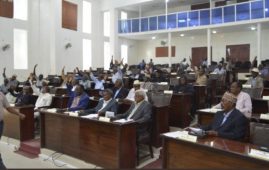
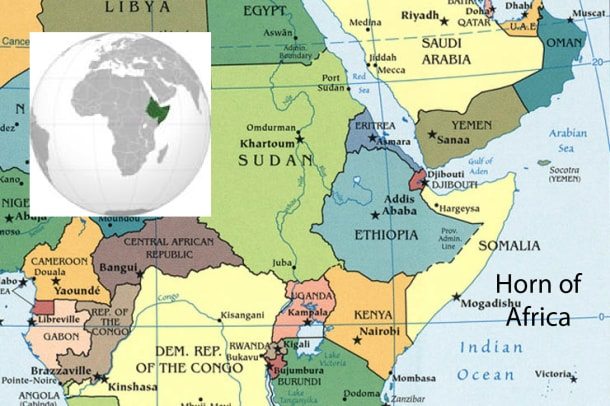
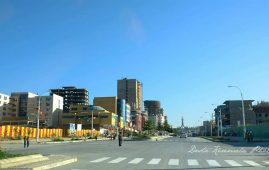
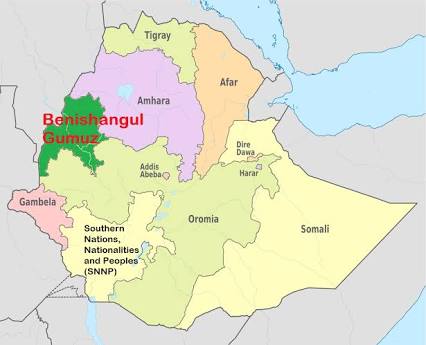

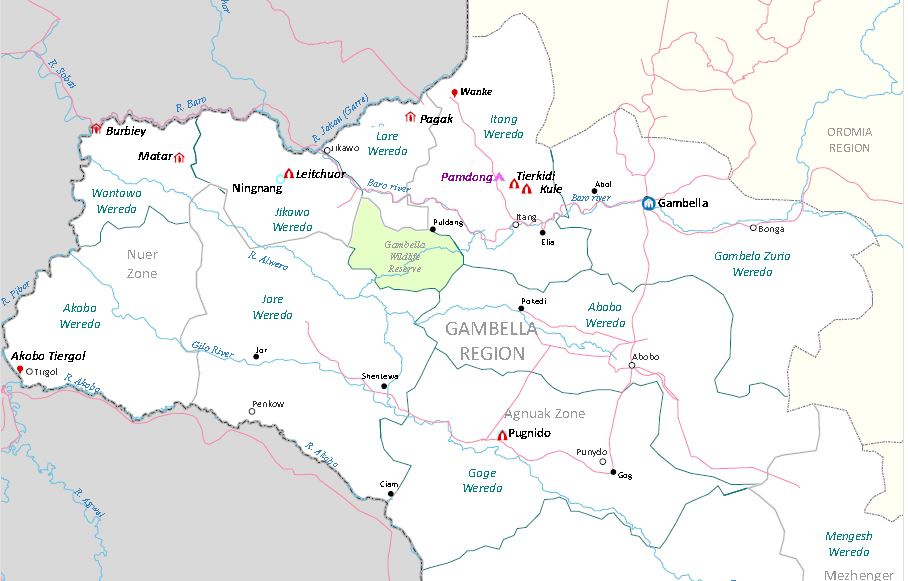
I just found this blog. What is this, another ETV? If you are living in the real world get hold of yourself. The truth is not hard to find if you look for it. Asking us to believe the regime’s Ministry than international organizations is like claiming 99.64 election results is democracy. What is going on with Woyane cadres; Dumb and dumber?
Thanks Daniel for bringing this in to your blog, Just to say some thing on this matter…….. because I am so touched with the way how some Europeans and whites are thinking on what is meant by land grabbing……
We know what we are doing and please leave Ethiopia and Ethiopians alone. Just look at what the Great Britain is doing in Zimbabwe that is what is meant by land grabbing not providing land for Indians or Chinese for specified time with a known limited time period where the country have all the rights to take all corrective and supervision regarding the natural resource management by those companies. The Great Britain had been grabbing all the Africans like in Zimbabwe, the Sudan etc that is not the case here in Ethiopia we are free and autonomous to decide on how to manage our land and we are not displacing our people from their individual land ownership rather we are creating job opportunities for our people.
Should be provide top the GB or other Europeans to be nominated as a legally sound.
This is just a dead politics for me it is too shallow to convince any intellect.
better to appreciate the government of Ethiopia and support in it’s struggle against the first MDG eradicate extreme hunger and poverty.
Thank you
yada yada yada …. It is the same old propaganda.
Here is a link to a research from Oxfam internation on land grab: http://policy-practice.oxfam.org.uk/publications/land-and-power-the-growing-scandal-surrounding-the-new-wave-of-investments-in-l-142858.
Unlike the Ministry of Agriculture’s cheap propaganda it is a research that is based on similar scenarios from other African and Asian countries.
Here is a summary of the research on the Guardian. http://www.guardian.co.uk/global-development/poverty-matters/2011/oct/14/myths-about-global-rush-farmland
Below is an extract from the article on the Guardian:
“Despite claims to the contrary, investors target the best lands,” say the researchers. “They seek land with access to water resources, fertile soil, infrastructure and proximity to markets to facilitate the profitability and viability of their ventures. The large-scale projects tend to be located where most people live. Further analysis shows that these are also the places where poverty rates are relatively lower and where land was already in use for food production – rather than it being empty, unused, marginal land in poor regions.”
The second myth is that the projects will help bring food security and energy security. Research in Ethiopia, Ghana, Mali, Mozambique, Senegal and Tanzania has found that most of the deals being struck are for export commodities, including biofuels and cut flowers. In Mozambique, where about 35% of households are chronically food insecure, a mere 32,000 hectares out of the 433,000 approved for agriculture investment between 2007 and 2009 were for food crops.
“Unrestricted export clauses in contracts, together with small-scale food producers losing their key productive asset, may well worsen rather than improve food security,” says the report. “Moreover, investors’ short time scales may tempt them into unsustainable cultivation practices, undermining agricultural production in the long-term. The research also shows that current costs of producing biofuels are prohibitive for African countries, meaning that raw materials must be exported to US or European markets to be economically viable.”
The third myth being encouraged by host governments is that the projects will create jobs. In fact, analysis of the contracts, shows that local employment generation requirements are absent from contracts and rarely materialise in practice. “Jobs appear to be few, short-lived, seasonal and low-paid.
Surveys and analysis of agro-investment in west Africa show that very few jobs were created for local people, while pastoralists and women – who rely upon the land, trees and water in common areas for economic activities – were suffering as a result of reduced access.
The fourth myth is that the projects will bring tax revenues. What really happens, says Oxfam, is that governments “actually forfeit benefits by offering tax incentives in the race for investment finance. In 2008, the government of Pakistan offered ‘tax exemptions, duty-free equipment imports, and 100% land ownership in special free zones in its agriculture, livestock and dairy sectors’, in a bid to attract foreign investors.